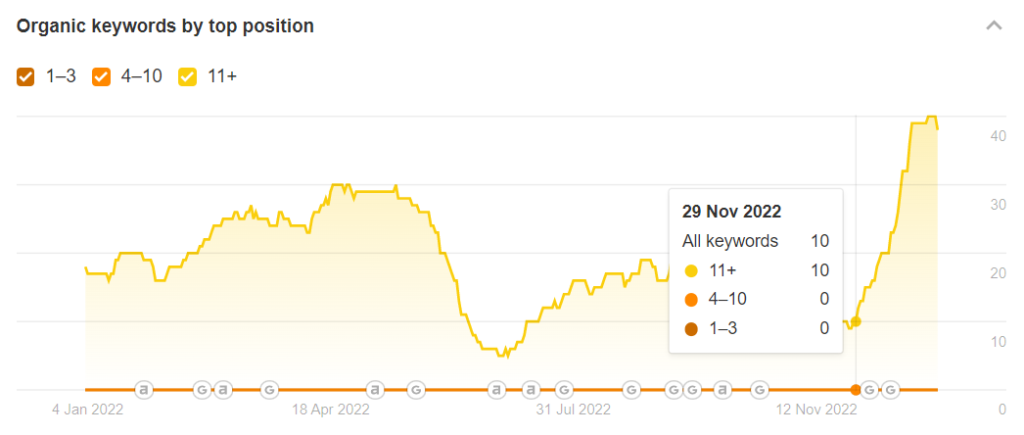Is TikTok Manipulating Keywords?

Casually scrolling through my ‘For You’ page on TikTok, I came across a video that sparked extreme interest as an SEO, and I have a feeling it will be compelling to many of you as well.
In this video, the narrator directs viewers by telling them exactly what words they need to place into the search bar.
These new keywords will then take them to find their favourite products directly from wholesalers in China for a smaller price.
This is good for the companies and the viewer as there is a strong USP – discounted products.
Let’s do some research…
The first keyword mentioned in the video is: Qingdao Eyelash.
At first glance, we can see there is little to no search volume and no competition, making this keyword an extremely easy one to target and a quick win that we can rank highly on.

Going back to the video, it was published on the 30th of November 2022. The day after the release, we can assume that the number one ranking URL started to receive more traffic.
While we don’t have access to their analytics, we can see via ahrefs that Google has been granting them with more keywords, which is an indicator that their site is being noticed by bots as the number of pages has NOT changed. They also do not currently hold any backlinks.

While writing this article, the TikTok we have been discussing has accumulated 1.3 MILLION views.
Now, if even only 1% of viewers use these suggested keywords after viewing the video, we have 13,000 users searching a new keyword in a single month. A sharp spike like that is enough to shake the scene for any keyword.
Better yet, this TikTok account is creating and publishing more videos doing the same thing, and there are plenty of other creators making similar content.

Let’s take a look at the last keyword mentioned in the video: Yongjia button.
With only 96 results on the SERP, it seems very underwhelming. However, the search results do provide us with exactly what the video said it would.
In this example, when we head to ahrefs, we are not seeing the same results we saw for the first keywords. In this case, the top URL is only ranking for 1 keyword.
This could be because the viewers of the video were less interested in buttons compared to eyelashes or because of where the keyword was mentioned in the video.
At the end of the day, this is a trend that we are going to have to monitor, record, and report back on at a later date to see what types of results it achieves.
Why does this matter?
Now, this video is serving a unique purpose by bypassing targeting keywords that, traditionally, users would be placing in their search bar. And clearly these are words that SEOs can be spending a lot of time and energy on.
All in all, these videos allow users to find products using new words that have less competition.
In SEO, we typically place a lot of time and effort into understanding what users are placing into the search and why. We can analyse years and years of data to identify the perfect keywords to fit your current audience members along with your ideal targets.
While conducting keyword research, we will also identify keywords with less competition that your products and services rank well for.
If they have low search volume, they will most likely be pushed to the back of the queue to accommodate for the heavier targets with high search volume and tougher competition. However, if videos like this are changing the way that users search, we must integrate TikTok research into our keyword research.
What does this mean for me?
If you currently have a high quality TikTok following, perhaps you want to give this strategy a shot.
You can lead your audience to a specific page with discounts for TikTok viewers using a specific keyword. Or, if you have not begun a TikTok channel, perhaps you can try using an influencer or simply begin piecing together you content strategy.
Need help with your SEO strategy?
Find out how our team of experts can boost your SEO.
Own your marketing data & simplify your tech stack.
Have you read?
Chrome’s announcement on dropping cookie opt-in last month closed the door on a 5 year saga for marketers. But what is the landscape like in 2025 for cookie-based measurement?
Generative AI is transforming the way that marketers plan and assemble content for their Paid Ads. As big platforms like Google, Meta and TikTok increasingly build the tools needed to...
In a surprising move that has sparked heated debate, Mark Zuckerberg announced on his Instagram that Meta will be reducing its levels of censorship and in particular fact-checking on its...



